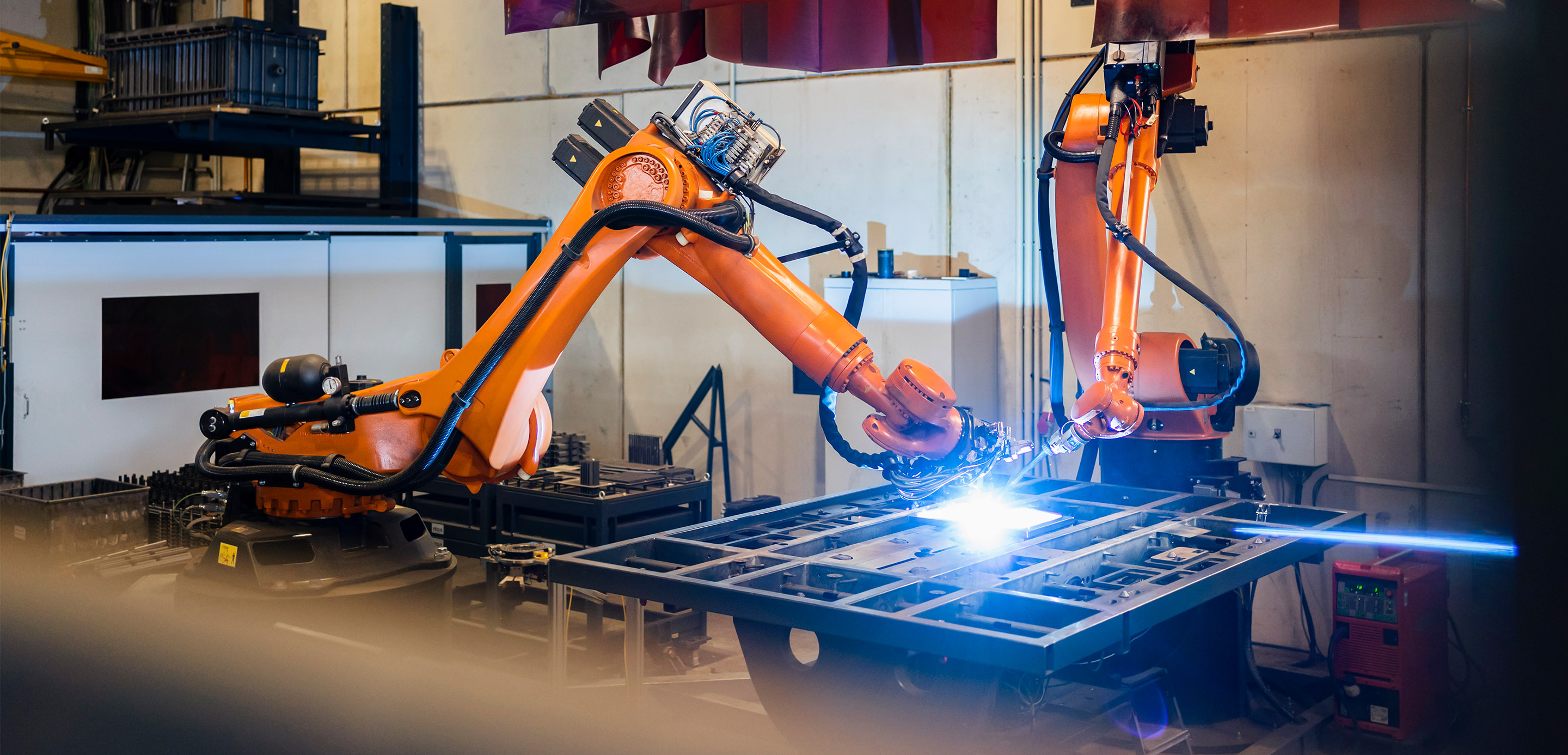- Article

- Global Research
- General Research Insights
- Emerging markets
How globally integrated is India?
Challenging myths, seeking opportunities
- It is in periods of rising integration with the world that India has grown its fastest
- Financial integration has outpaced trade integration
- There is an opportunity to ramp up trade and grow faster
Challenging myths, seeking opportunities
There is a general sense that India is mostly a domestic demand-driven economy. We disagree. We find that India has grown at its fastest pace in periods of rising global integration with the world.
In our report we use the rolling correlation between India and world GDP growth as a measure of global integration, and find that the 2000-2010 decade was a period of falling import tariffs, as well as rising global integration, export share, and GDP growth. In the next decade, 2010-2020, all of this changed. Tariffs were raised, and global integration, export share and GDP growth fell. Encouragingly, the few years following the pandemic reflect a rise in global integration once again, though so far it remains a tad one-sided – more financial integration, less trade integration.
6.3%
India GDP growth 2025, HSBC forecast
We drill down into GDP sectors and find that consumption is most integrated with world growth (95%), followed by investment (70%), and then exports (35%). Surprising, as one might imagine exports to be most globally aligned. One reason could be that India’s global connections are stronger in finance – Indian equity markets have become far more aligned with global equities over the last two decades – and this impacts consumption. But integration remains weaker in trade, which influences export and investment.
Consumption is most integrated with world growth (95%), followed by investment (70%), and then exports (35%)
Within investment, we find corporate investment is more globally integrated, something we notice across countries. Meanwhile, integration is lower for household investment, which includes both real estate and investment by small firms. Within consumption, discretionary consumption is more globally interlinked than essentials. If indeed financial integration has been strong, it is likely to support high-end consumers who tend to be better invested in financial markets. Within exports, weak integration has been led by the more labour-intensive mid-tech exports, like textiles and toys, which have been sluggish for a decade. Bringing all sectors together, we have two distinct stories unfolding.
Stronger financial integration: Those who have been able to enjoy the gains of financial integration have seen incomes and discretionary consumption rise. Many of these individuals are associated with large firms (where global capex is globally correlated) or new sectors such as rapidly rising professional services exports. On the other hand, lower global integration in mid-tech exports explains weaker growth and incomes, and why individuals in these sectors are largely focused on consumption of essentials, without much surplus for investment. A corollary here would be that steps which raise mid-tech labour-intensive exports can boost India’s trade interlinkages, mass consumption, investment, and India’s GDP growth. An opportunity to grow exports as supply chains are getting redrawn is knocking at the door.
To hear more from Pranjul on this topic, please listen to the episode on India’s global integration on The Macro Brief podcast, or read the full report here (you must be a client of HSBC Global Research to access this link).
To learn more, including how to subscribe, please email us at AskResearch@hsbc.com

HSBC Global Investment Summit
Our second Global Investment Summit took place in Hong Kong 25 to 27 March 2025. Explore expert insights and thought provoking dialogue on pressing opportunities and challenges with experts and leaders from around the world.
The following analyst(s), who is(are) primarily responsible for this document, certifies(y) that the opinion(s), views or forecasts expressed herein accurately reflect their personal view(s) and that no part of their compensation was, is or will be directly or indirectly related to the specific recommendation(s) or views contained in this research report: Pranjul Bhandari and Aayushi Chaudhary
This document has been issued by the Research Department of HSBC.
HSBC and its affiliates will from time to time sell to and buy from customers the securities/instruments, both equity and debt (including derivatives) of companies covered in HSBC Research on a principal or agency basis or act as a market maker or liquidity provider in the securities/instruments mentioned in this report.
Analysts, economists, and strategists are paid in part by reference to the profitability of HSBC which includes investment banking, sales & trading, and principal trading revenues.
Whether, or in what time frame, an update of this analysis will be published is not determined in advance.
For disclosures in respect of any company mentioned in this report, please see the most recently published report on that company available at www.hsbcnet.com/research.
Additional disclosures
- This report is dated as at 22 May 2025.
- All market data included in this report are dated as at close 19 May 2025, unless a different date and/or a specific time of day is indicated in the report.
- HSBC has procedures in place to identify and manage any potential conflicts of interest that arise in connection with its Research business. HSBC's analysts and its other staff who are involved in the preparation and dissemination of Research operate and have a management reporting line independent of HSBC's Investment Banking business. Information Barrier procedures are in place between the Investment Banking, Principal Trading, and Research businesses to ensure that any confidential and/or price sensitive information is handled in an appropriate manner.
- You are not permitted to use, for reference, any data in this document for the purpose of (i) determining the interest payable, or other sums due, under loan agreements or under other financial contracts or instruments, (ii) determining the price at which a financial instrument may be bought or sold or traded or redeemed, or the value of a financial instrument, and/or (iii) measuring the performance of a financial instrument or of an investment fund.
Issuer of report
The Hongkong and Shanghai Banking Corporation Limited, Singapore Branch
This document has been issued by The Hongkong and Shanghai Banking Corporation Limited, Singapore Branch which has based this document on information obtained from sources it believes to be reliable but which it has not independently verified. Neither The Hongkong and Shanghai Banking Corporation Limited, Singapore Branch nor any member of its group companies (“HSBC”) make any guarantee, representation or warranty nor accept any responsibility or liability as to the accuracy or completeness of this document and is not responsible for errors of transmission of factual or analytical data, nor is HSBC liable for damages arising out of any person’s reliance on this information. The information and opinions contained within the report are based upon publicly available information at the time of publication, represent the present judgment of HSBC and are subject to change without notice.
This document is not and should not be construed as an offer to sell or solicitation of an offer to purchase or subscribe for any investment or other investment products mentioned in it and/or to participate in any trading strategy. It does not constitute a prospectus or other offering document. Information in this document is general and should not be construed as personal advice, given it has been prepared without taking account of the objectives, financial situation or needs of any particular investor. Accordingly, investors should, before acting on it, consider the appropriateness of the information, having regard to their objectives, financial situation and needs. If necessary, seek professional investment and tax advice.
The decision and responsibility on whether or not to purchase, subscribe or sell (as applicable) must be taken by the investor. In no event will any member of the HSBC group be liable to the recipient for any direct or indirect or any other damages of any kind arising from or in connection with reliance on any information and materials herein.
Past performance is not necessarily a guide to future performance. The value of any investment or income may go down as well as up and you may not get back the full amount invested. Where an investment is denominated in a currency other than the local currency of the recipient of the research report, changes in the exchange rates may have an adverse effect on the value, price or income of that investment. In case of investments for which there is no recognised market it may be difficult for investors to sell their investments or to obtain reliable information about its value or the extent of the risk to which it is exposed. Some of the statements contained in this document may be considered forward looking statements which provide current expectations or forecasts of future events. Such forward looking statements are not guarantees of future performance or events and involve risks and uncertainties. Actual results may differ materially from those described in such forward-looking statements as a result of various factors.
This document is for information purposes only and may not be redistributed or passed on, directly or indirectly, to any other person, in whole or in part, for any purpose. The distribution of this document in other jurisdictions may be restricted by law, and persons into whose possession this document comes should inform themselves about, and observe, any such restrictions. By accepting this report, you agree to be bound by the foregoing instructions. If this report is received by a customer of an affiliate of HSBC, its provision to the recipient is subject to the terms of business in place between the recipient and such affiliate. The document is intended to be distributed in its entirety. Unless governing law permits otherwise, you must contact a HSBC Group member in your home jurisdiction if you wish to use HSBC Group services in effecting a transaction in any investment mentioned in this document.
Certain investment products mentioned in this document may not be eligible for sale in some states or countries, and they may not be suitable for all types of investors. Investors should consult with their HSBC representative regarding the suitability of the investment products mentioned in this document.
HSBC and/or its officers, directors and employees may have positions in any securities in companies mentioned in this document. HSBC may act as market maker or may have assumed an underwriting commitment in the securities of companies discussed in this document (or in related investments), may sell or buy securities and may also perform or seek to perform investment banking or underwriting services for or relating to those companies and may also be represented on the supervisory board or any other committee of those companies.
From time to time research analysts conduct site visits of covered issuers. HSBC policies prohibit research analysts from accepting payment or reimbursement for travel expenses from the issuer for such visits.
The Hongkong and Shanghai Banking Corporation Limited, Singapore Branch is regulated by the Monetary Authority of Singapore.
© Copyright 2025, The Hongkong and Shanghai Banking Corporation Limited, Singapore Branch, ALL RIGHTS RESERVED. No part of this publication may be reproduced, stored in a retrieval system, or transmitted, on any form or by any means, electronic, mechanical, photocopying, recording, or otherwise, without the prior written permission of insert issuing entity name. MDDI (P) 005/01/2025, MDDI (P) 006/09/2024, MDDI (P) 004/10/2024, MDDI (P) 020/10/2024


